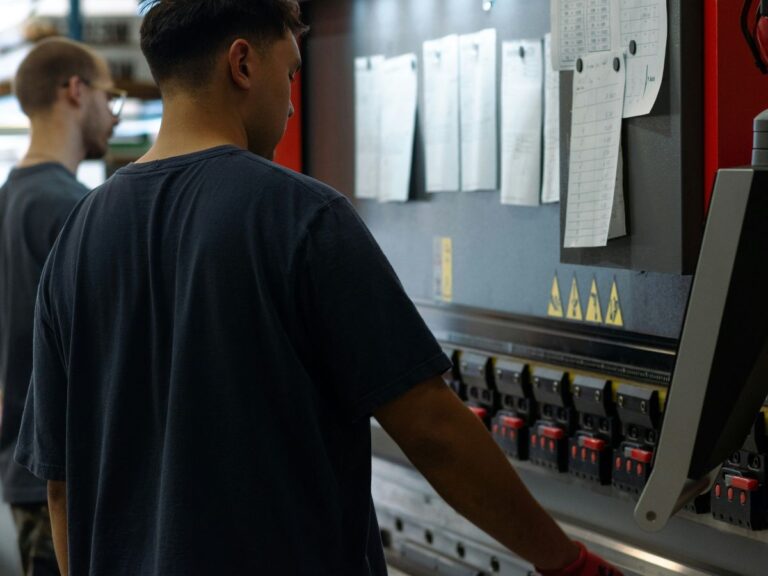A well-organised working area is a friendly environment for productivity and job safety. Routine maintenance helps maintain order and keeps equipment longer while minimising safety hazards. Whether you operate an office, factory, or workshop, developing a systematic method of handling your workspace may be the key to overall efficiency. Following are six helpful tips to assist you in keeping your working area:
Establish a Cleaning Routine
Cleanliness is the foundation of productivity and health in the working environment. If not tackled regularly, it easily builds up with dust, dirt, and clutter. Devise ways of cleaning that are workable for all to avoid such problems. This includes daily tasks like wiping down desks, clearing out trash, organising paperwork, and deep cleaning of common areas and equipment weekly.
A clean workspace not only avoids the spread of germs but also keeps the mind clear. Workers will feel more motivated and focused when they have to work in a neat area, thus reducing employee absence as well. Encourage people to clean as they go along rather than building up clutter. This creates an ongoing maintenance culture rather than a reactive one.
Improve Workspace Security
Security involves the creation of a safe working environment, preservation of the physical assets, and sensitive information that surrounds an organisation. Security entails so much more than just locking up your doors and fitting your buildings with cameras. Digital systems should also be secured. This means upgrading software regularly, having employees make use of strong passwords, and multi-factor authentication to protect sensitive data.
Also, conduct penetration testing from time to time to identify any vulnerabilities. Review your existing security policies and procedures and revise them wherever necessary. Combine physical and digital security measures to protect your workspace from any potential threats. The security training session with your team will also lead to a security culture where all of them will be observant and proactive.
Perform Regular Equipment Maintenance
If your workplace relies on machinery or technology, you must regularly perform maintenance on all equipment. Well-maintained machines are far more efficient and reduce incidents of downtime and expensive repairs. Make sure to design a maintenance schedule for all equipment, from computers and printers down to larger, more complicated machinery. Make sure to also document these activities so nothing gets forgotten.
Early problem detection is an integral ingredient in machine maintenance. Invest in effective wireless vibration monitoring services to track the condition of your equipment in real time. This proactive method easily catches unusual vibrations, which can be early warning signals of wear or malfunction. Early detection of problems prevents major breakdowns, prolongs the life of machinery, and sustains productivity.
Organise and Declutter Regularly
Workspace clutter leads to reduced productivity and increased levels of stress. In developing an efficient environment, cleaning must be regularly carried out. First, analyse the workspace and note the places that are most prone to clutter. Employ storage solutions like shelves, bins, and labelled drawers to designate a place for everything.
Encourage all staff to form the habit of cleaning up after themselves in their area, as a clean workplace is everyone’s responsibility. Also, provide guidelines on how to organise common areas, such as where to put shared office supplies, and instil the habit of putting things back into their proper place after use. By making cleaning up a habit, you will facilitate smoother workflows and guarantee that everything one needs will be found right when one needs it.
Create Clear Communication Channels
Effective communication is important in any given workspace and should be especially adhered to when addressing problems that relate to maintenance. If channels of communication are clear, then problems relating to malfunctioned equipment, safety, and shortage of supplies are reported and fixed as soon as possible.
Appoint one contact person or team to handle all issues relating to maintenance. Consider using project management or communication tools for tracking the status of every maintenance task; this will also make it easy for anyone to get current information. Open communication will prevent minor issues from blowing out of proportion and keep the workspace at all times functional and safe.
Review and Update Policies Regularly
Your maintenance policies should evolve and change with business growth, too. It is relevant to periodically review the procedure for maintenance and update it accordingly. It includes reassessment of cleaning schedules, machine maintenance plans, and security protocols. Let your policy be up to date with whatever changes have been introduced in terms of new equipment or technologies within the workplace.
Also, regular policy reviews make sure that the inefficiencies in the current processes are identified. Obtain suggestions from employees regarding how a process can be improved. Encourage the collaborative building of maintenance policies which would be effective, workable, and match the actual needs in your workplace.
In conclusion, workspace maintenance is an ongoing process. Each of the elements mentioned above plays a critical role in creating a productive and safe environment. You can keep your workspace functional, secure, and efficient – to enhance productivity and employee satisfaction – with these six tips.
Also, read: Chartcontacts.shop Revolutionize Your Workflow Ultimate guide 2024

